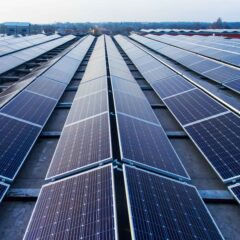The switch to renewable energy sources, the increase in decentralised electricity generation and storage and the growing demand for energy services based on electricity represent major challenges for the grids. Smart grid solutions are an important component in the integrated energy system of the future. A “smart power grid” enables the generation, distribution and consumption of electricity to be coordinated in an ideal way in order to ensure a flexible and secure energy supply. Smart grid technologies provide solutions for these types of intelligent networks that connect all stakeholders in the energy system and achieve efficient interaction through smart control. Many individual solutions for intelligent energy systems have been developed in recent years. These now need to be incorporated into an integrated overall energy management system that combines market, customer and grid-related requirements.
The International Smart Grid Action Network (ISGAN TCP) is an important tool in terms of developing and sharing expertise on smart, clean, flexible and resilient power grids. The aim is to develop smart grid technologies even further and broaden their use regionally, nationally and globally. The programme provides a platform for linking stakeholders from administration, research institutions and companies. Policy recommendations are also developed in this context on a regular basis. Austria is represented in various working groups.
www.nachhaltigwirtschaften.at/en/iea/technologyprogrammes/isgan
The ISGAN Working Group 91 addresses “flexibility in the electricity supply system” and the associated market mechanisms. Flexibility in the context of electricity supply refers to the option of changing the feed-in or withdrawal at a defined grid node of the electricity system via a prompt change in response to external signals. Flexibility is required in order to maintain or restore stability in the electricity system, e.g. in the event of fluctuating electricity generation from renewable energy sources, through flexible responses to conditions that are changing constantly. The following topics are just some of those addressed in the project: identification and definition of flexibilities, issues regarding the integration of the trade in flexibilities, requirements of different market participants, as well as the development and scaling of interoperable flexibility markets. The Task 4 “Operational Planning” is led by Austria.
Project goals:
> Cross-country definitions and characterisations of flexibility markets
> Definition and understanding of local flexibility markets
> Comparison of the methods between different approaches
> Understanding of the interaction between different flex markets (redispatch, balancing energy, spot markets)
> Potential for local flexibility markets to support the distribution network
> Identification of best practices and contributions towards standardising flexibilities
www.nachhaltigwirtschaften.at/en/iea/technologyprogrammes/isgan/iea-isgan-working-group-9-workingperiod-2021-2023.php
1 Participating countries: Austria, Belgium, Canada, India, Japan, Republic of Korea, Sweden, United Kingdom
![]()
Industry4Redispatch
The power grid will need digitalised and interconnected systems that enable the optimal use of flexibility in order for renewable energy to be used to a greater extent. The Industry4Redispatch project is a key project of the NEFI model region that focuses on the control of industrial energy supply systems.1
The primary goal is to allow industrial plants to respond flexibly to redispatch needs. In electricity trading, “redispatch” refers to interventions made to adjust the power feed-in of power plants at the request of the transmission system operator. The aim is to avoid or eliminate regional congestions for individual operational assets in the transmission system. All necessary technical, regulatory, economic and organisational requirements for provision of redispatch, the necessary interaction as well as the optimisation and control between transmission system operators (TSOs) and distribution system operators (DSOs) are being investigated as part of the project. Innovative solutions to support the grid are being developed that enable trials of an online, predictive and holistic control concept for industrial energy supply systems. The new technologies are intended to optimise participation in the market by companies and at the same time secure their energy supply.
Redispatch Modul
All relevant stakeholders are working closely together in the project to find an integrated solution for the automation and optimisation of the industry. The innovative redispatch module will be developed based on standardised requirements and trialled in a proof of concept. The module is aimed at utilising unused flexibility for industrial customers to provide redispatch in compliance with the requirements from the DSOs. The redispatch concept will be trialled and tested at various industrial plants in order to address the needs of industrial customers with differing levels of maturity in their automation systems.
Transformation guidelines
The final deliverables will be a step-by-step guide to transforming a conventional industrial energy supply system into a more flexible and more highly decarbonised system with optimum operations as well as the guidelines for the TSO-DSO coordination process.
www.nefi.at/en/project/industry4redispatch
1 Project partners: AIT Austrian Institute of Technology (project management), Ankerbrot GmbH, APG Austrian Power Grid, Energie Kompass GmbH, Energienetze Steiermark GmbH, EVN AG, evon GmbH, kleinkraft OG, Mondi AG, Netz Burgenland GmbH, Netz Niederösterreich GmbH, Netz Oberösterreich GmbH, Siemens AG, TU Wien – Institute for Energy Systems and Thermodynamics/Institute of Mechanics and Mechatronics, Control and Process Automation, voestalpine Stahl GmbH, Wiesbauer Holding AG
The project is part of the NEFI (New Energy for Industry) model region, which is promoting the decarbonisation of industrial companies driven by innovation and technology development.
www.nefi.at


